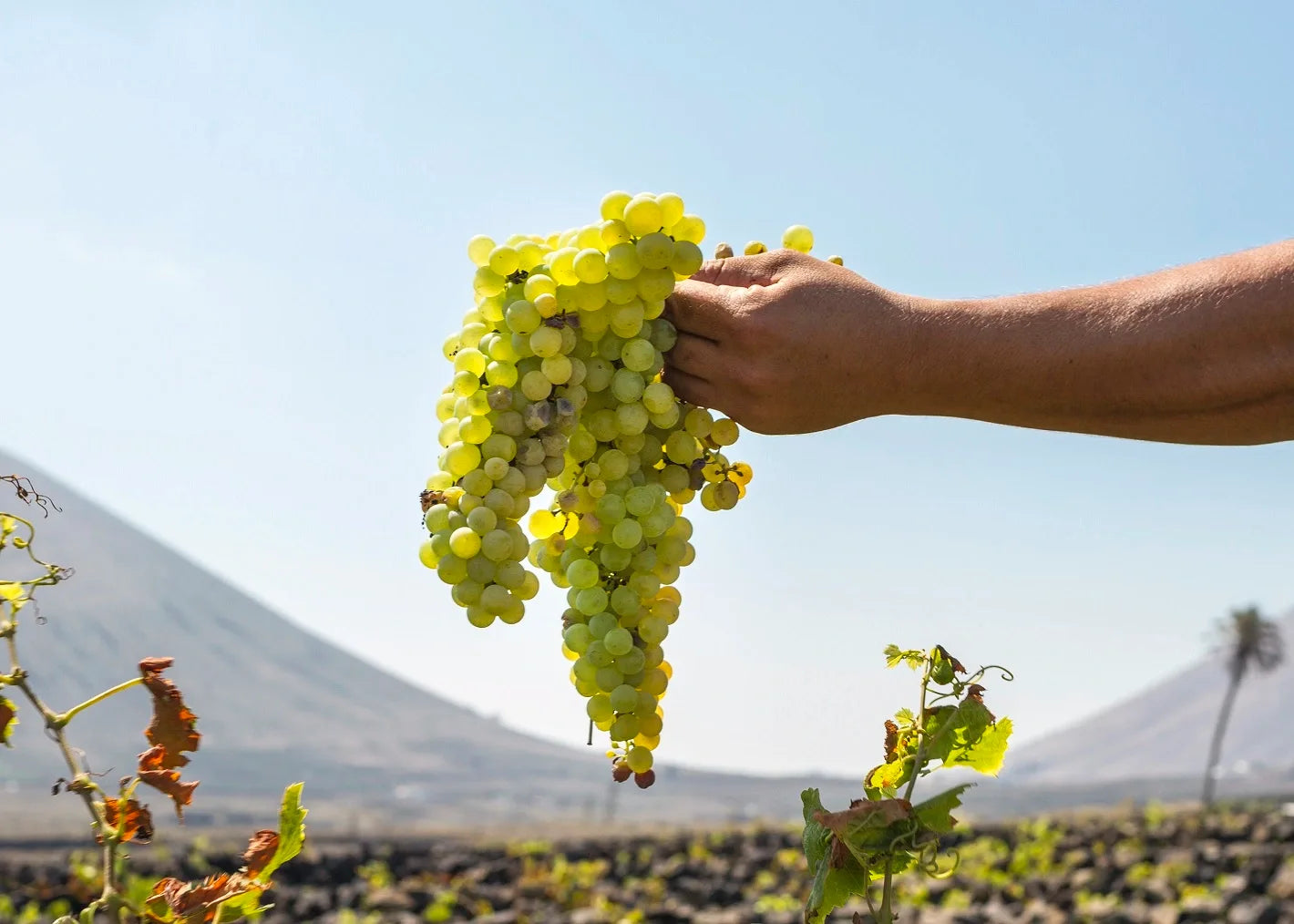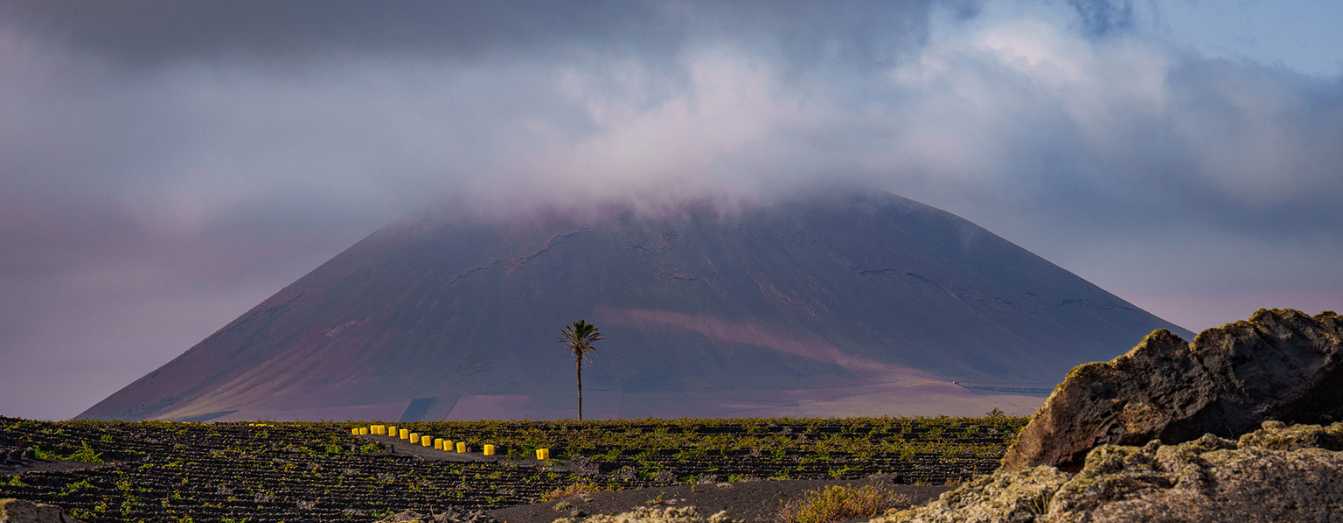
THE VINEYARD OF THE IMPOSSIBLE
Extreme conditions, exceptional wines

VOLCANO HERITAGE
With the Sahara Desert as its continental neighbor, it only rains on average 35 days a year in Lanzarote. The trade winds bless with their humidity, but the clouds pass by. Volcanic ash maintains that scarce and invaluable moisture.
These pre-phylloxera vines have survived uncultivated for more than two centuries. They are grown in rows, in holes and in even deeper 'chabocos'.
In these harsh conditions, the varieties Volcanic Malvasia, Listán Negro, Listán Blanco, Vijariego and Moscatel are mainly pampered and cultivated.

VARIETY MALVASÍA VOLCANIC LANZAROTE
VOLCANIC MALVASIA
Small and delicate, with a gratitude that speaks of intensity and directness, Volcanic Malvasia offers floral aromas, notes of jasmine and orange blossom.
Of Greek origin, it has been cultivated in the Canary Islands since the 15th century. It is the emblem grape of the house

LISTAN NEGRO VARIETY LANZAROTE
LISTÁN NEGRO
Listán Negro is the darker-skinned variety of the well-known palomino, very common in the Marco de Jerez for its fortified wines.
On the island, it offers soft, friendly, fruity and medium-bodied wines, with echoes of black pepper and compote black fruit.
Rustic and vigorous, resistant to difficulties, it denotes silky, friendly and enveloping tannins. Its mineral tones reveal its origin.

VARIETY LISTAN BLANCO LANZAROTE
LISTÁN BLANCO
The softness, a formidable and balanced acidity and an unctuous and deep journey trace the identity of the LIstán Blanco, a very aromatic grape, old support for brandy and that today exhibits an eminently gastronomic aspect.

LANZAROTE MOSCATEL VARIETY
MOSCATEL
With its characteristic overripeness when harvested, the muscat grape offers us syrup, loquat, grapefruit, dried apricots, candied fruit and the fragrance of aromatic plants. The strains from which it comes date back to the end of the 19th century.

HANDCRAFTED HARVEST
All our grapes are hand-picked to ensure exceptional quality


